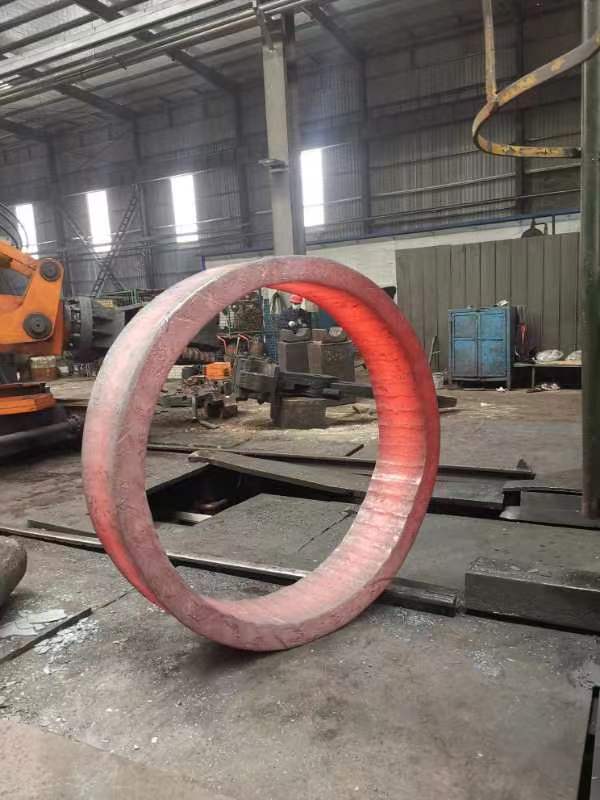The main classification of forging
2023-09-07
The main classification of forging
Forging is mainly classified according to forming method and deformation temperature. Forging according to the forming method can be divided into forging and stamping two categories; According to the deformation temperature, there are four main kinds of forging, which can be divided into hot forging, cold forging, warm forging and isothermal forging.
1. Hot forging
Hot forging is forging above the recrystallization temperature of the metal. The high temperature can also reduce the deformation resistance of the metal and reduce the tonnage of the required forging machinery. High temperature can improve the plasticity of the metal, is conducive to improving the internal quality of the workpiece, so that it is not easy to crack. However, the hot forging process is many, the workpiece accuracy is poor, the surface is not smooth, and the forging is easy to produce oxidation, decarburization and burning damage. In order to complete as much forging work as possible with one heating, the temperature interval between the initial forging temperature and the final forging temperature of hot forging should be as large as possible. However, excessive initial forging temperature will cause excessive growth of metal grains and overheat phenomenon, which will reduce the quality of forging parts. When the workpiece is large and thick, the material strength is high, and the plasticity is low (such as the rolling bending of the extra-thick plate, the drawing length of the high carbon steel rod, etc.), the hot forging is used. When the metal (such as lead, tin, zinc, copper, aluminum, etc.) has enough plasticity and a small amount of deformation (such as in most stamping processes), or when the total amount of deformation is large and the forging process used (such as extrusion, radial forging, etc.) is conducive to the plastic deformation of the metal, hot forging is often not used, and cold forging is used. When the temperature is close to the melting point of the metal, the intergranular low melting point material will melt and intergranular oxidation, resulting in overfiring. Burned blanks tend to crumble during forging. Generally used hot forging temperature is: carbon steel 800 ~ 1250℃; Alloy structural steel 850 ~ 1150℃; High speed steel 900 ~ 1100℃; Commonly used aluminum alloy 380 ~ 500℃; Titanium alloy 850 ~ 1000℃; Brass 700 ~ 900℃.
2. Cold forging
It is a forging at a lower metal recrystallization temperature, usually referred to as cold forging mainly refers to the forging at room temperature, and the forging at higher than room temperature, but not exceeding the recrystallization temperature is called warm forging.
Many cold forging and cold stamping parts can be directly used as parts or products, and no longer need to be cut. The workpiece formed by cold forging at room temperature has high shape and size accuracy, smooth surface, fewer processing procedures, and is convenient for automatic production. However, in cold forging, due to the low plasticity of the metal, it is easy to crack during deformation, and the deformation resistance is large, and large tonnage forging machinery is required.
3. Warm forging
The precision of warm forging is high, the surface is smooth and the deformation resistance is small. The metal is pre-heated at a much lower temperature than hot forging. The forging press which is higher than normal temperature but does not exceed recrystallization temperature is called warm forging press.
4. Isothermal forging
The billet temperature is maintained at a constant value throughout the forming process. Isothermal forging requires the mold and blank to be kept at a constant temperature together, the cost is higher, and it is only used for special forging processes, such as superplastic forming. Isothermal forging is to make full use of the high plasticity of some metals at the same temperature, or to obtain specific microstructure and properties.
this is open die forging produced by tongxin precision forging company




